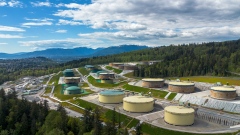Jun 28, 2023
Canada just set a new record for population growth
, Bloomberg News
New immigration policy will meet most of our demands: Quebec Employers Council’s CEO Karl Blackburn
Canada’s population growth set a fresh record in the first quarter as Prime Minister Justin Trudeau’s government ramps up immigration to guard against the economic drag of aging demographics.
The country added 292,232 more people in the first three months of the year, or 0.7 per cent, for a total of 39,858,480 as of April 1, Statistics Canada reported Wednesday in Ottawa. That’s the highest rate of growth in any first quarter in data going back to 1972, with immigration responsible for 98 per cent of the gains.
It’s a continuation of strong population gains through all of last year. In 2022, Canada’s population grew by 1 million for the first time in its history, with the 2.7 per cent annual pace matching that of developing nations Burkina Faso, Burundi and Sudan.
With the first-quarter gain, the 12-month rolling total of net international migrants — which includes permanent residents — is now nearly 1.2 million.
Rapid population growth has added labor supply to an economy that’s in need of more workers, but it also boosts consumption and housing demand at a time the Bank of Canada is trying to tamp down growth and tame inflation. It’s worsening housing shortages in major cities from Toronto to Vancouver, however it also helps fill labor shortages in rural communities.
A separate real-time model run by the statistics agency showed Canada’s population passed the 40 million mark earlier this month. The quarterly tally is based on census data.
“Population growth in Canada is literally off the charts,” Royce Mendes, head of macro strategy at Desjardins Securities, said in a report to investors.
With the labor market still historically tight, he predicted net international migration would continue at a “torrid pace” in the second quarter. “However, the inflow could slow to a trickle in the second half of the year, should the economy move into a lower gear.”






